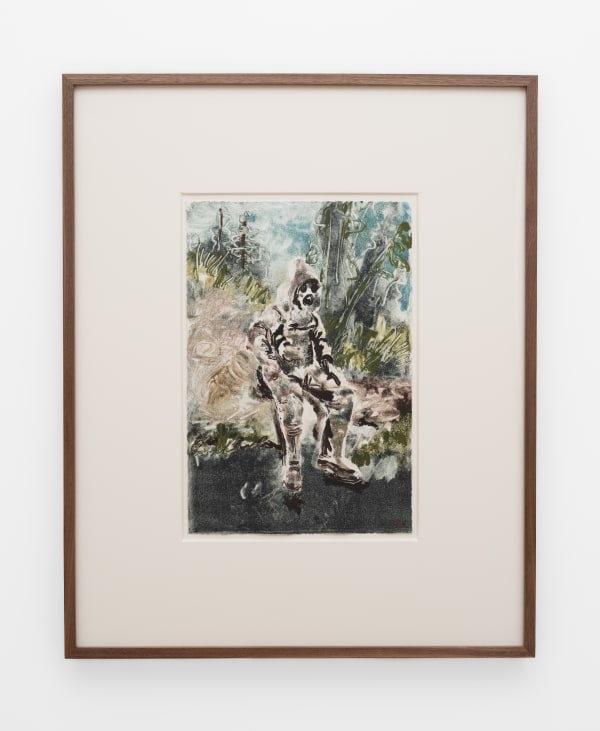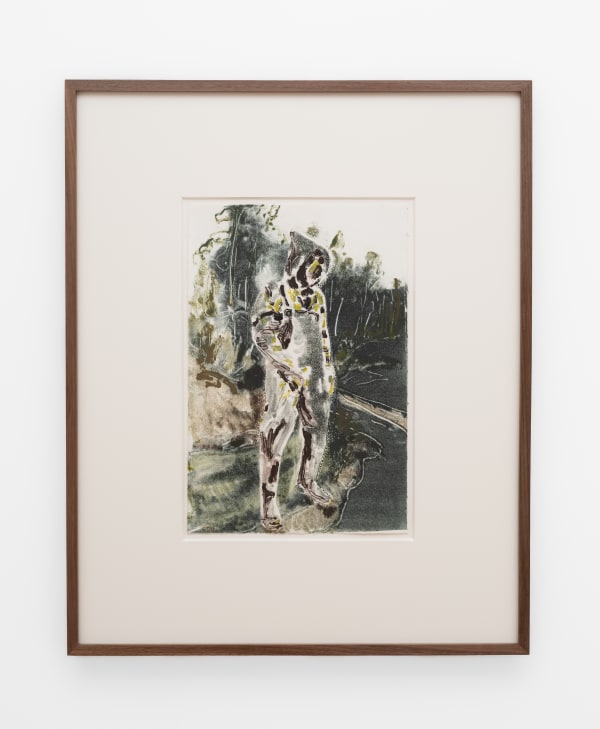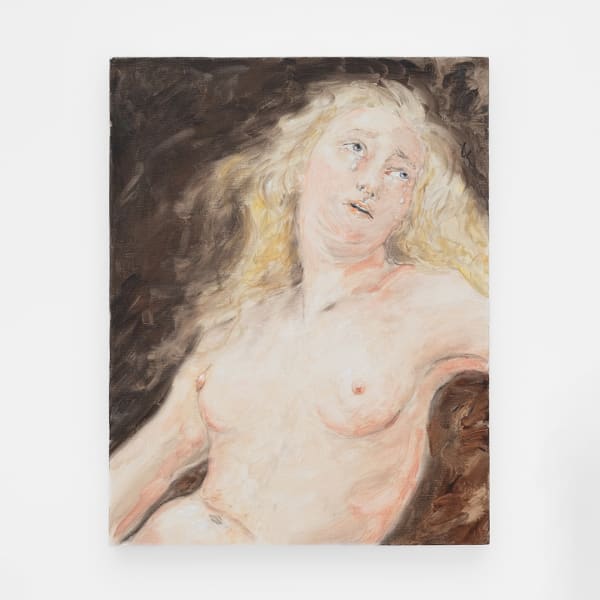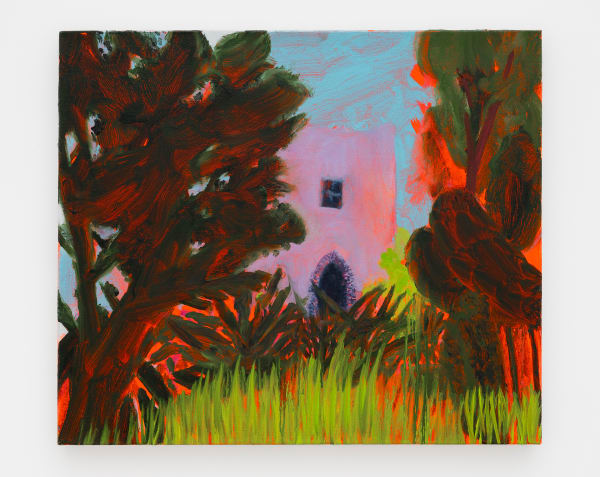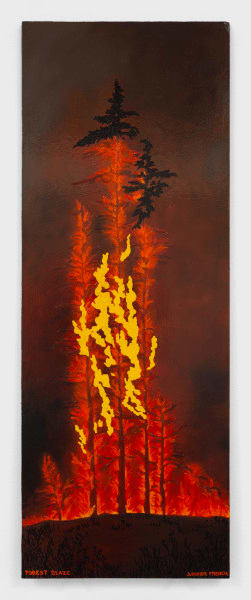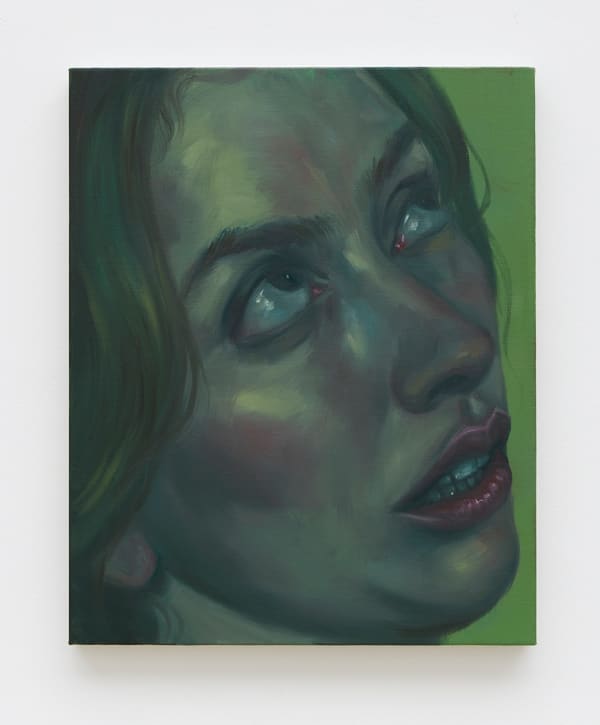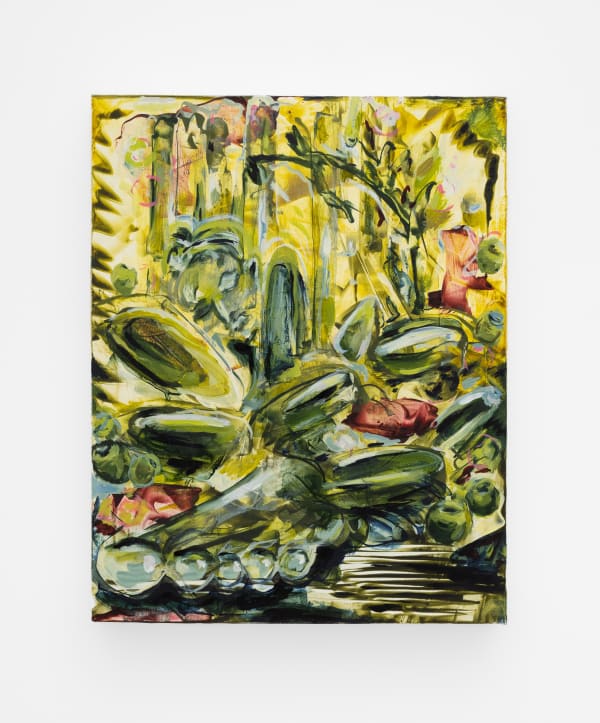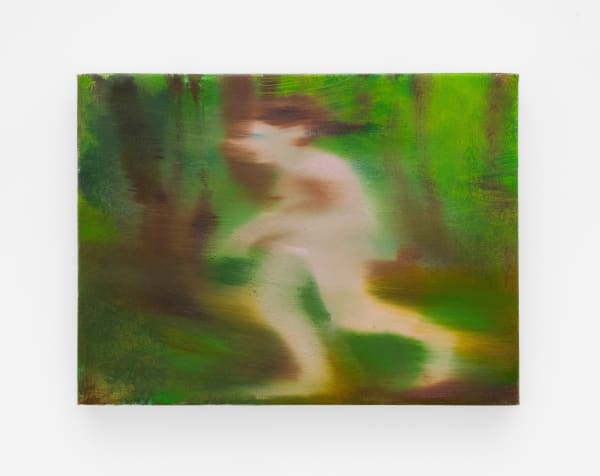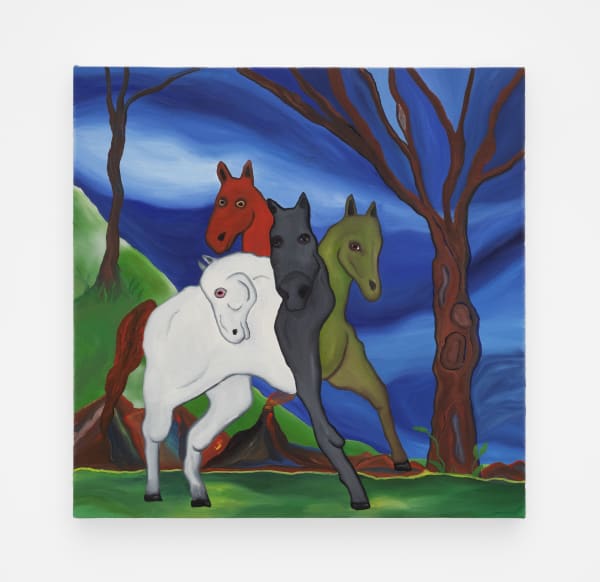Claire Tabouret, Jessie Homer French, Elizabeth Glaessner, Nicole Wittenberg, Marianne Vitale, Chloe Wise, Louis Eisner: Apocalypse Now
-
 Claire TabouretIn the Woods (Brown), 2017Acrylic and ink on paper15 x 10 x inches
Claire TabouretIn the Woods (Brown), 2017Acrylic and ink on paper15 x 10 x inches -
 Claire TabouretIn the Woods (Green), 2017Acrylic and ink on paper15 x 10 x inches
Claire TabouretIn the Woods (Green), 2017Acrylic and ink on paper15 x 10 x inches -
 Marianne VitaleSelf Portrait (Pink Dress), 2023Oil on canvas20 x 16 x Inches
Marianne VitaleSelf Portrait (Pink Dress), 2023Oil on canvas20 x 16 x Inches -
 Tanya MerrilAriadne (after Wertmüller), 2023Oil and graphite on canvas18 x 14 inches
Tanya MerrilAriadne (after Wertmüller), 2023Oil and graphite on canvas18 x 14 inches
45.7 x 35.6 centimeters -
 Soumya NetrabileNight Fire, 2023Oil on canvas20 x 16 inches
Soumya NetrabileNight Fire, 2023Oil on canvas20 x 16 inches
50.8 x 40.6 centimeters -
 Will GabaldónLandscape (5/3/23), 2023Oil on linen8 x 10 in (20.3 x 25.4 cm)
Will GabaldónLandscape (5/3/23), 2023Oil on linen8 x 10 in (20.3 x 25.4 cm)
Framed 10 x 12 in (25.4 x 30.5 cm) -
 Nicole WittenbergThe Well 2, 2023Oil on canvas24 x 28 in (61 x 71.1 cm)
Nicole WittenbergThe Well 2, 2023Oil on canvas24 x 28 in (61 x 71.1 cm) -
 Jessie Homer FrenchForest Blaze, 2022Oil on wood32 x 12 inches
Jessie Homer FrenchForest Blaze, 2022Oil on wood32 x 12 inches
81.3 x 30.5 cms -
 Chloe WiseGreen Giulia, 2023Oil on linen20 x 16 x inches
Chloe WiseGreen Giulia, 2023Oil on linen20 x 16 x inches -
 Caroline AbsherLast Sunset on Planet Earth, 2023Oil on canvas14 x 11 in (35.6 x 27.9 cm)
Caroline AbsherLast Sunset on Planet Earth, 2023Oil on canvas14 x 11 in (35.6 x 27.9 cm) -
 Louis EisnerMr. Natural, 2023Aluminum and wood28 x 8 x 8 inches
Louis EisnerMr. Natural, 2023Aluminum and wood28 x 8 x 8 inches -
 Jo MesserOlive play, 2023Oil on panel14 x 11 inches
Jo MesserOlive play, 2023Oil on panel14 x 11 inches
35.6 x 27.9 centimeters -
 Elizabeth GlaessnerLate, 2023Oil on linen9 x 12 inches
Elizabeth GlaessnerLate, 2023Oil on linen9 x 12 inches -
 Mickey LeeBroodmare, 2023Acrylic on canvas24 x 24 in (61 x 61 cm)
Mickey LeeBroodmare, 2023Acrylic on canvas24 x 24 in (61 x 61 cm)
The island of Patmos is typified by mountainous stretches and ample plateaus, its picturesque coastline dotted with pebbled and sandy beaches.The place has hardly adjusted to the nuances of contemporaneity. Villages and historical architecture remain intact, only partially interrupted by modern developments.This northernmost Dodecanese island is instilled with a rich theological history. Its geography once served as the site of John the Apostle’s exile. It was in the Cave of the Apocalypse where John received his visions of the end and conceived the Book of Revelation.
It is through the lenses of biblical narratives and Patmos’s geographical context that the group exhibition "Apocalypse Now" takes shape. In Will Gabaldón’s tranquil vista, drenched in cool tones and unpeopled, might describe the calm before the storm. This moment of stillness could, at any point, erupt into calamity. For now, one is able to relish in Gabaldón’s pastoral vision, which vibrates with a contemporary sublime. Elsewhere, Nicole Wittenberg’s The Well 2 implicates an igneous orange shade as its base, its principal subject sympathetic to Saint John’s monastic complex on the island.
Tanya Merril’s portrait of Ariadne is culled from Wertmüller’s depiction of the same subject lying on the Greek shore.The princess was abandoned byTheseus on Naxos, discovered after the fact by Dionysus who went on to marry her and create a constellation from her bejeweled crown. In Merril’s iteration, Ariadne’s prominent tears take their inspiration from the glass ones of Man Ray’s Larmes (Tears). Chloe Wise similarly crops in on her female subject, a Guilia bathed in bluish greens. The oceanic color palette suits its Ageanic
context, invoking the energies of the turquoise waters. Giulia’s glistening eyes and the seduction of her lips agape reflect Wise’s remarkable aptitude for representing the visages of her subjects.
Soumya Netrabile’s Night Fire is well aligned with Jessie Homer French’s Forest Blaze. Both pictures suggest a tragedy akin to that prophesied in the Book of Revelation’s thirteen chapter, which elucidates an outbreak of fires upon the Earth. According to certain interpretations of John’s text, his vision of devastation incorporates “Divine retribution,” i.e., the punishment of man for his sins. As he predicts, Judgement Day will descend on the planet, initiating terror, and those who have not repented will be cast down to Hell as God’s wrath materializes.
The lone sculpture on view is Louis Eisner’s aluminum man, which presents itself as a petite monument. Reminiscent of Rodin’s host of John the Baptist bronzes, Eisner has solidified his nude subject in what appears to be an exploratory mission. John the Apostle, like John the Baptist, ultimately served in deference to the Savior.The implications of biblical iconography in Eisner’s sculpture complement its Patmos context nicely, likewise suggesting a figure roaming the island’s natural landscape. Where certain artists here provide a platform for the viewer to explore and uncover the latent anxieties cast from suggestions of the apocalypse, others offer repose through serene compositions of the natural landscape. In "Apocalypse Now," everything begins and ends with the mystique of its Grecian context.
– Reilly Davidson
